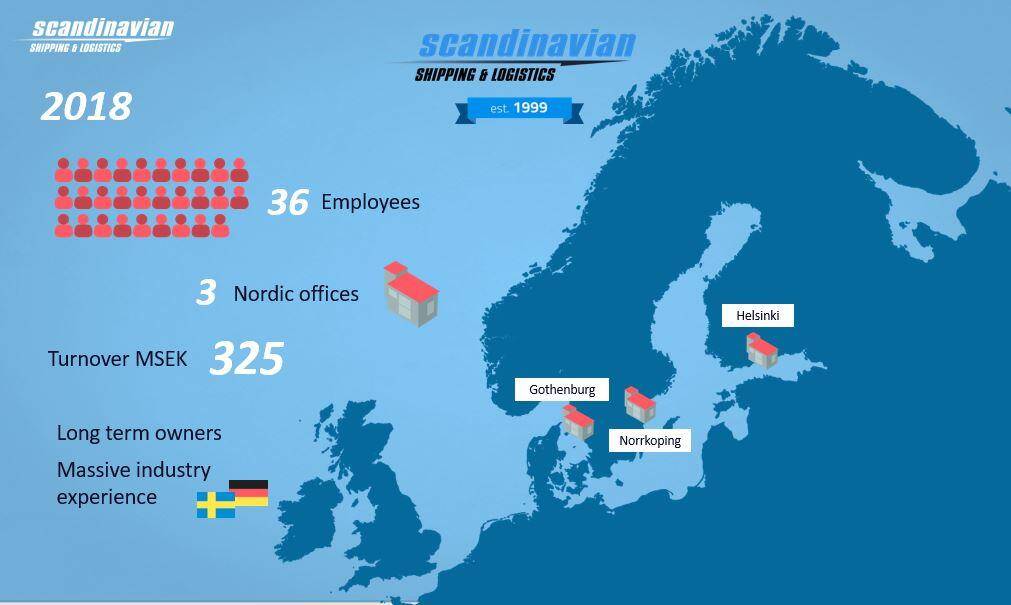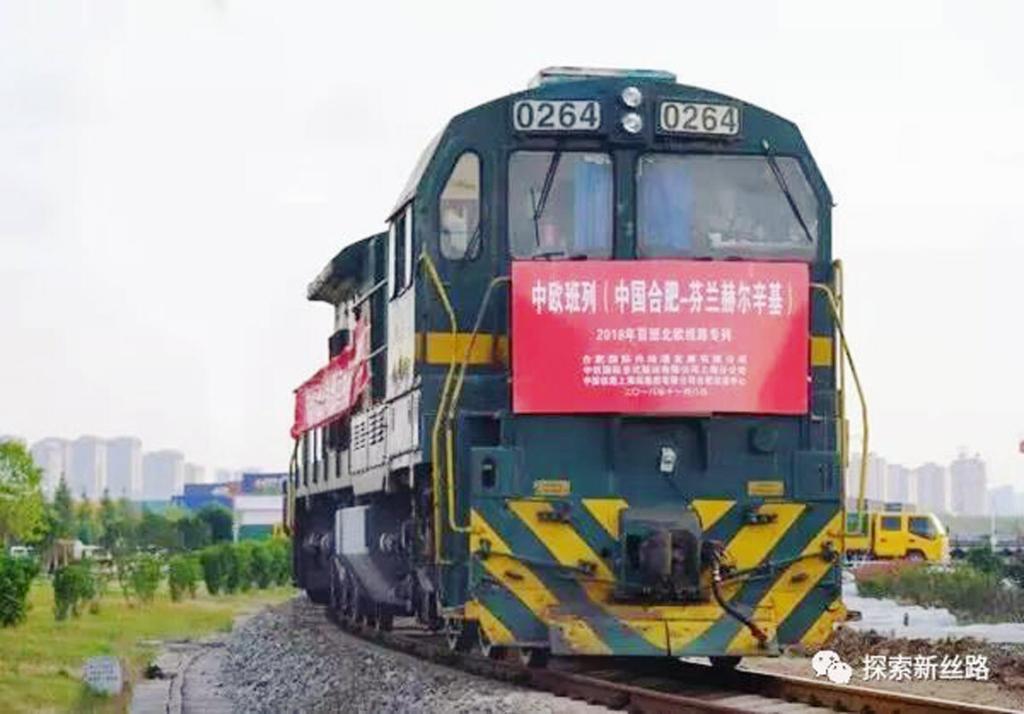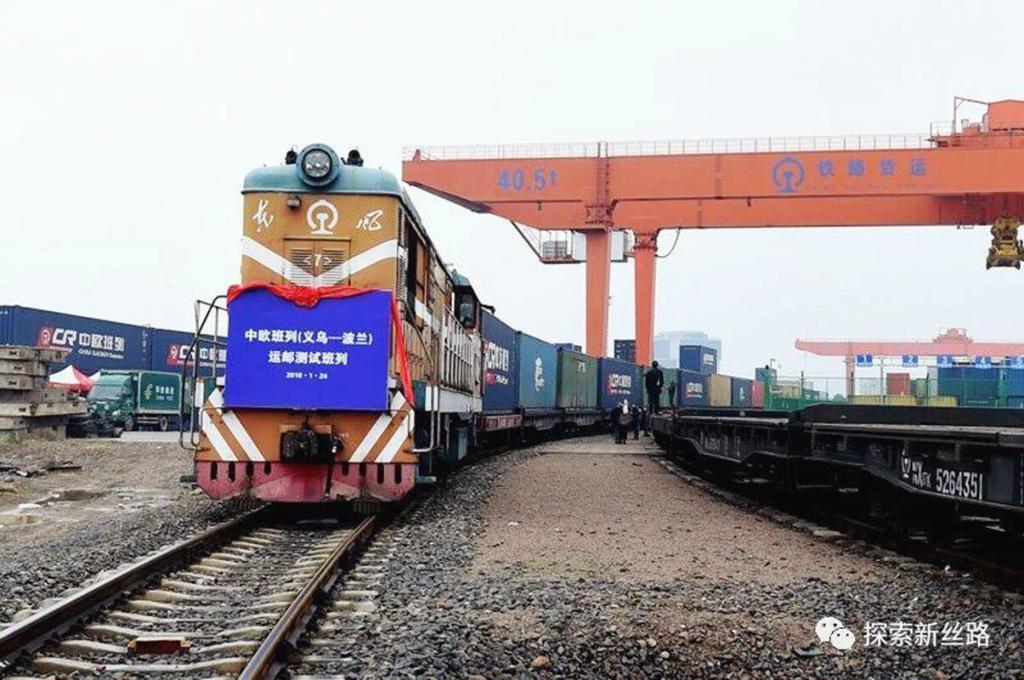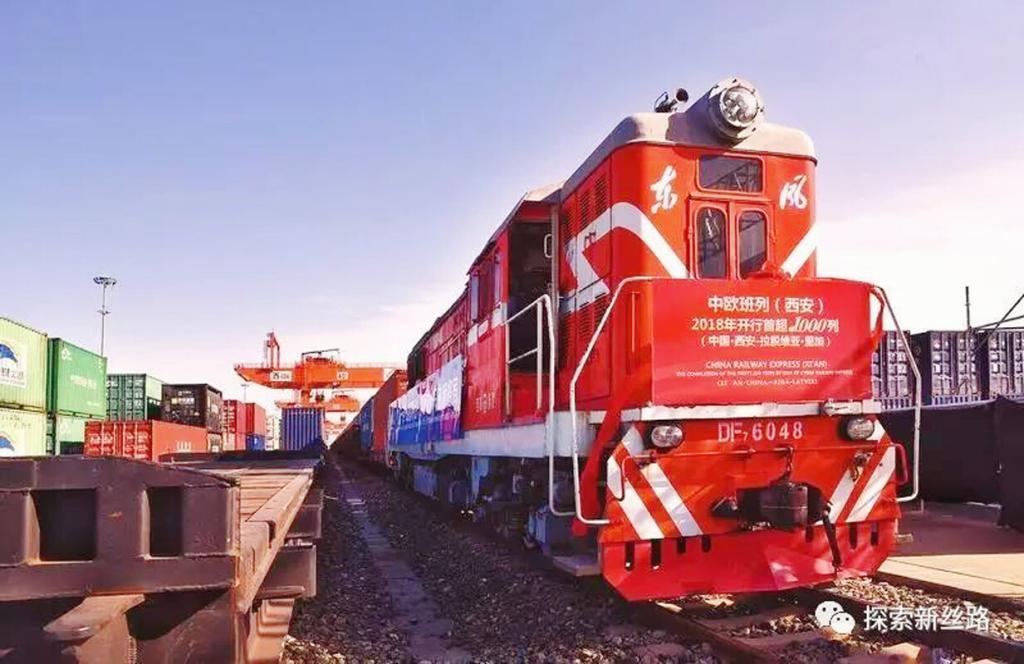When was the company SSL established? Who owns it and where are your headquarters located? Also, what have been your main activities in shipping, overall, since the company started?
SSL was founded in 1999 and the headquarters are in Gothenburg, Sweden. The majority shareholder is BEG Holding and Menzell Döhle Group is also a part owner. We act as an agent for thirteen different shipping lines in Sweden. Hoegh Autoliners, Kestrel, EML and CSAV are just a few of them.
In general, we specialize in shipments that require a deeper knowledge than simply arranging a container to take them from A to B. Our project department handles everything from flat racks to chartering vessels in order to carry out complicated projects.
In recent years, we have focused a lot on the development of our rail service because we see an increasing demand in the market from both direct customers and small and medium sized forwarders in Sweden who lack the experience or contacts in China to set this up themselves.

When did you decide to develop transport by rail as one of your features?
I have been working with rail freight to and from China since 2014. This is perhaps because I lived and worked in Shanghai for a couple of years. Rail freight has been booming between China and Europe over the last three years and it’s exciting to be a part of the development. It’s quite rare that freight forwarders can sell new services to existing and potential clients in the market, but the rail service has been welcomed with open arms. The main reason for the fast development is the lower cost compared with air freight, but also the faster lead times compared with sea freight.
Recently, the number of rail hubs in China has increased dramatically as well, which gives us more flexibility and options, something that our clients very much appreciate.

Railway transport has gotten a lot of attention in recent years, so can you tell us how it works from China to Scandinavia? How long is the transit time? Can it be monitored and how about the routing in general?
With FCL, we send the container by truck to the shipper premises and they make sure the cargo is securely loaded. Next, we bring the container back to the chosen rail hub in China and lift it onto the train. The majority of the rail hubs in China provide service to either Warsaw, Poland or Hamburg, Germany, which are the two main hubs for the Scandinavian market. There is also one service from Hefei directly to Finland, but this only operates bi-weekly now.
Once the container arrives in Europe, we unload the cargo in the warehouse and arrange a trailer truck to collect the cargo and deliver it to the final destination. Direct delivery of the containers to the final destination is available, but the cost is higher than in the prior option.
With LCL, we collect the cargo by truck from the shipper premises and send it to a warehouse where we consolidate several customers’ cargo in the same container. Once the container is securely loaded, we bring it to the rail station and load it on the train. When the container arrives in Warsaw or Hamburg, we unload all cargo and arrange for a truck to collect the cargo and take care of the final delivery. https://www.scandinavianshipping.se/freight/rail/

Do you also accept less container loads nowadays?
LCL shipments have been available for several years and we’re seeing an increased demand for this in the market. The main purpose of rail transports to and from China is to decrease the number of air consignments. Clients mainly use sea freight as their transport mode, but every now and then delays happen for various reasons.
Most of the order may be sent out on time by sea freight, but five to seven pallets may be delayed. If these pallets are ready one or two weeks after the deadline for catching the sea departure, we can still send out the cargo by rail freight and manage to deliver it on time in Scandinavia. More and more clients understand that rail is an alternative for transporting their cargo, but I believe that many customers still use air freight, the more expensive option, because it’s what they know – it’s an old habit.

What kind of waybill or bill of lading is available for such transports?
Railway BL.
Do you feel that it is reliable?
A lot of clients use rail freight because they need the cargo faster than sea freight can provide it. They often don’t want to pay for the expensive air freight service, but I think many customers still choose air freight because its a well-known and well-established product that they know works well.
I believe that there is still some resistance to rail freight because its quite a new service and people tend to choose what has worked in the past, rather than trying something new. To my knowledge, the biggest worries that clients have are delays and security during transport. But these are irrelevant as security is very good and all containers that Scandinavian Shipping & Logistics handles are equipped with GPS.

Why did you choose a career in shipping, Johan?
The main reason I chose a career within shipping was the international arena in which it operates. I always wanted to live abroad and I can’t think of any more suitable industry for that purpose. The experience I gained in Shanghai is something I will always have with me.
How is best to get in touch with you?
Johan Ignell
SCANDINAVIAN SHIPPING & LOGISTICS AB
Business Development Manager
P.O. Box 1039
SE-405 22 Göteborg, Sweden
Visiting Address: Fiskhamnsgatan 2, 414 58 Göteborg
Direct: +46 (0) 31 337 87 77
Mobile: +46 (0) 729 73 53 61
Email: johan.ignell@scandinavianshipping.se




